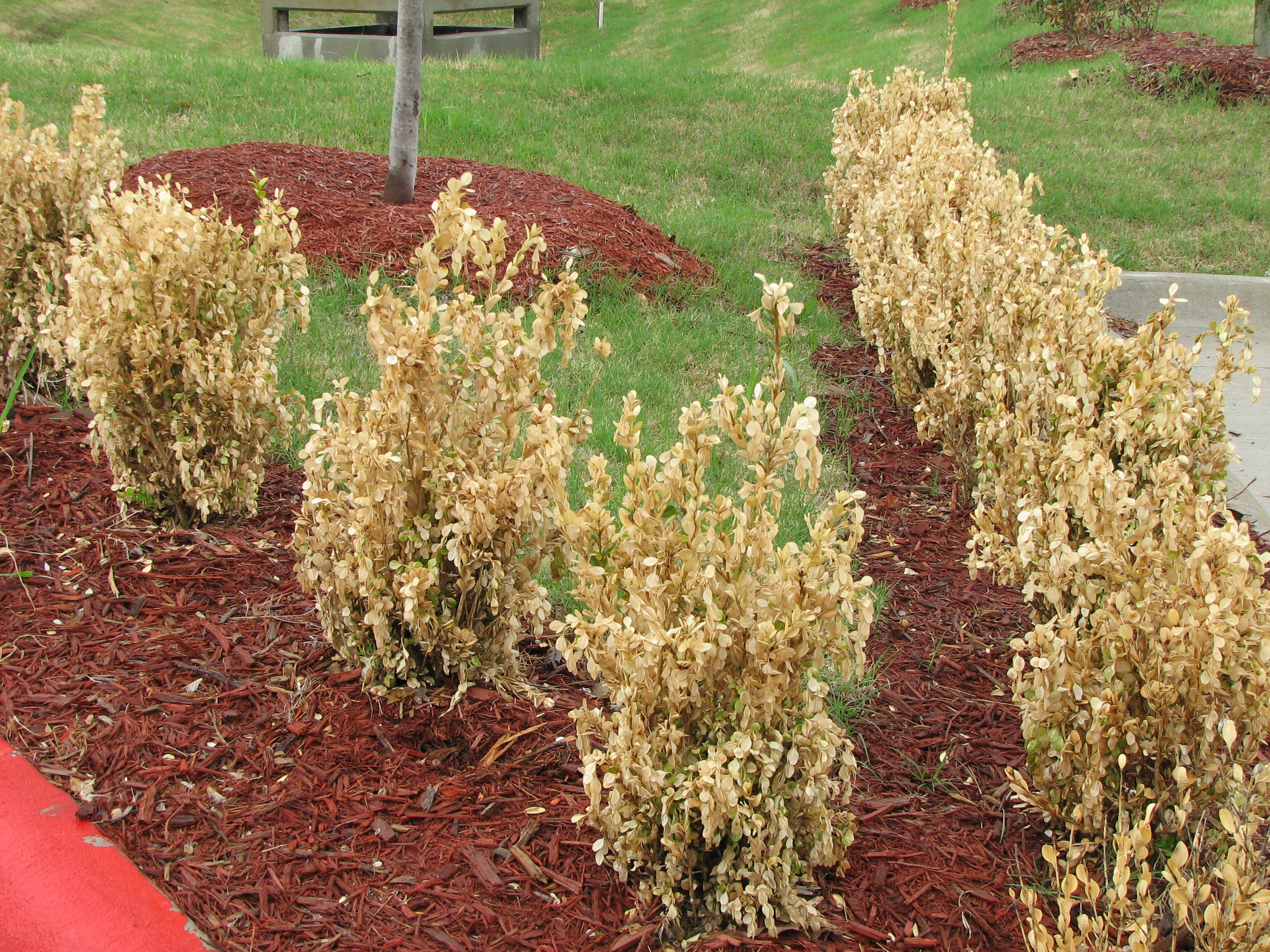Resource Library
Plant of the Week: Winter Injury to plants
The 2021 Valentine’s week freeze endured by those of us living in the heartland of America will long be remembered for the havoc it caused. Record low temperatures, such as the minus 20 degrees Fahrenheit recorded here in Fayetteville, not only busted pipes but some evergreen plants look pretty rough. While some plants across the state may look grim, this type of midwinter freeze will not cause lasting damage to our gardens.
Woody plants in the temperate zone have the physics-defying ability to prevent ice crystals from forming inside plant cells when temperatures drop below freezing. The hardiest plants can delay intercellular water from freezing down to minus 40 degrees. The timberline at the top of a mountain or the southern edge of the tundra zone is a natural biological boundary where woody plants can grow no further north because temperatures fall below this always-lethal temperature.
Less hardy plants that we grow in the mid-south are not as efficient in preventing ice formation in their cells. Plants hardy to zone 6 are able to prevent water from freezing to at least minus 10 degrees, especially if the plant has had a gradual cool-down period and has had time to move internal cell water to the spaces between the cells.
Somewhat surprisingly, if plants are too dry when really low temperatures arrive, they are more susceptible to winter kill. Because the low temperature arrival was gradual and soil moisture conditions were favorable, our landscape plants were in optimum condition to endure the low temperatures this winter.
Rapid drops in temperature, either in the fall before plants have had a chance to harden off or in the spring when they have lost their hardening and the sap has started to rise in the stems is devastating to many plants. The Halloween freeze of the late 1990s and the Easter freeze of 2007 were extreme examples of these kinds of freeze events. The temperatures were only about 10 degrees below freezing, but the damage was severe because the cells were full of water.
How are different parts of the plant affected?
Different parts of the plant have differing degrees of cold tolerance. Stem tissue (including trunks) are the most cold tolerant, roots the least. Crape myrtles are reliably hardy through zone 7 (0 degrees Fahrenheit), so I anticipate some trunk die-back after the 2021 freeze. The smaller branches are more susceptible to dieback than the larger trunks. Differences in location in the landscape, size of the plant and even clonal differences in cold susceptibility all influence dieback, so hold off on pruning until later in the spring when rising sap will identify the degree of injury. Though frozen back, none of the crape myrtles should have been killed outright.
Leaves and flower buds have intermediate hardiness between roots and stems. In north Arkansas a number of evergreens – nandinas, thorny Elaeagnus, Lorapetalums and even some azaleas – look like they have been assaulted with a blow torch. Their leaves are fried. Based on past experience, the leaves will be pushed off by new foliage when spring arrives and the plants should not be seriously affected. Azaleas with a more cold hardy pedigree (Kurumes, Girards, and Gables) should bloom normally while those with more southern ancestry will likely suffer some flower bud loss.
Root hardiness only comes into play when plants are grown in raised containers. Magnolias, hollies, and even oaks are all perfectly cold-hardy but their roots can be killed when temperatures drop below 20 degrees. Plants with a shallow roots system — azaleas and maples, for example — have more cold tolerance roots and can survive temperatures as low as 5-10 degrees without injury.
Well, what should I do about my winter-injured plants?
The extent of winter injury is often hard to determine until warmer weather arrives so I encourage people to be patient and take a wait and see approach. Some pruning of winter-injured plants will be required, but how much is needed will be easier to determine in a few weeks.
For more information about horticulture or to see other Plant of the Week columns, visit Extension’s Website, www.uaex.uada.edu, or contact your county extension agent. The Cooperative Extension Service is part of the U of A Division of Agriculture.
